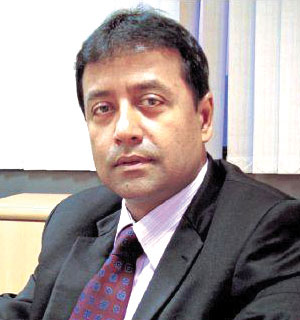
Sify provides end-to-end Cloud solutions to the government departments in various states. Kamal Nath, Chief Executive Officer, Sify Technologies Limited, talks at length about the company’s various products and services in an interaction with Manish Arora of Elets News Network (ENN)
How is Sify Technologies Ltd different from its rivals operating in the Indian Cloud space?
Sify’s Cloud and Managed Services covers end-to-end spectrum across advisory to service the provider of Cloud and IT transformation practices. The service portfolio is broadly categorised in the three-pillar approach, which differentiates us against most of our competitors.

The first is self service, enterprise Cloud platform “Cloud infinit”, having capabilities for delivering I/II/III-tier architecture across Public Cloud and Private Cloud on heterogeneous systems or platforms (VMware, Hyper-V, RHEV KVM) enabling end-to-end orchestration, automation, reporting, metering, billing and chargeback. The portal is built indigenously by the Sify Engineering team, which is on open architecture over the last two years and currently runs the Sify Cloud and is also deployed in five Government State Data Centers (SDCs).
Integrated Solution encompasses SLAs covering IaaS, Network (MPLS/VPN), Data Center, Managed Services as well as Application Services. Sify is uniquely positioned to address end-to-end spectrum with singlewindow ownership and guarantees.

What sort of Cloud services has Sify offered to the Government departments so far?
Cloud enablement of the SDCs is the first thing Sify has deployed, and currently, we are managing Cloud infinit platform and solutions in various SDCs. This has helped SDCs transform into an IT service provider to various government departments, and consolidate different applications, fasten infrastructure provisioning for projects, reduce IT procurement time, improve operations and governance.
The other one is Managed Cloud Services for state governments. A few services/portals of the state governments are running on Sify Cloud. For instance, the Department of Social Justice, Maharashtra and BOAT (Board of Apprenticeship Training) are some of the departments leveraging Cloud infrastructure, which is completely managed by Sify.
Besides, we have Cloud services for short term needs, too. Infrastructure needs like recently concluded Delhi Development Authority (DDA) scheme or the ones from the Maharashtra Housing and Area Development Authority (MHADA) in the past are completely run on Sify Cloud, in a highly secure and agile fashion. The whole setup is ready in three-to-four business days, and testing trials are conducted. It then runs for a period of up to two months, providing huge cost benefits and agility to the government departments.
Apart from that, there are DR (Disaster Recovery) sites on Cloud. Our firm has setup fully managed DR sites for some of the government departments. Sify’s team completely manages the DR replication, recovery and reverse recovery from Cloud to DR site. The proposition is highly unique and provides government departments with resiliencies and business continuity with highest efficiencies.
As a Cloud service provider, how do you combat the issue of network and data security?
Sify has undertaken SSAE-16 (SOC-2) Audit and Certification to ensure controls related to operations and compliance. The SSAE-16 (SOC-2) compliance reports on controls at Sify Technologies covering security, availability, processing, integrity, confidentiality and privacy. The controls are applicable for attributes that operate, collect, process, transmit, store, organise, maintain and dispose of information for customer entities. This applies to all enterprise customers, who outsource IaaS, PaaS, managed services, or entire functions built on Sify Cloud platform across data centers covered under certification.
Sify Cloud security is entrusted with a core team of security experts to cover both physical infrastructure securities as well as logical infrastructure securities.
 What are your views on Digital India campaign, PMJDY and ‘Make in India’ mission.
What are your views on Digital India campaign, PMJDY and ‘Make in India’ mission.
Digital India is an initiative by the Government of India to integrate the government departments and channelise their functioning. It aims at ensuring that the government services are made available to citizens electronically by reducing paperwork. The initiative also includes plan to connect rural areas with high speed internet networks by creating digital infrastructure, delivering services digitally and digital literacy.
The Pradhan Mantri Jan-Dhan Yojana (PMJDY) is a national mission for financial inclusion to ensure access to financial services, namely Personal Banking, Remittance, Credit, Insurance, Pension, etc., in an affordable manner.
| Sify Services / Features Proposed for 2015-16 | ||
| 1 | Sify Government POD in New Cloud sites | Multitenant Infra Public Cloud only for Govt departments, Security compliances as required by the Government, Government Departments can seamlessly burst to the same and adopt Hybrid Cloud Services with Same security comfort |
| 2 | PCI Complied Cloud infra / App specific infra (SAP cloud) | Multitenant Infra Public Cloud Complied with PCI Compliances, Ensures Security and Compliances as needed for PCI needs |
| 3 | Hyper Scale Cloud | Scalable Open Architecture deployments with Container Support |
| 4 | Storage Services- Object Storage, Archival, File Sync & Share | Transforms Enterprise Storages architectures & Backups with Structured & Unstructured data types |
| 5 | Paas services – DB as a Service, Data Warehousing | Allows customers to Run Analytics Cost effective, Security and Agile |
| 6 | Security Services – WAF, SIEM | Advanced Security Services for the customers to host critical data |
PMJDY focuses on coverage of households as against an earlier plan, which focused on coverage of villages. It focuses on coverage of rural as well as urban areas. The previous plan targeted only villages above 2,000 population, while under PMJDY, whole country is to be covered by extending banking facilities in each sub-service area consisting of 1,000–1,500 households, so that the facility is available to all within a reasonable distance, say about five kms. It is a major national programme designed to facilitate investment, foster innovation, enhance skill development and build best-in-class manufacturing infrastructure.
What kind of opportunities do you see for yourself and the IT industry in the wake of these initiatives?
Our network expanse of 40,000 PoPs (points of presence) currently reaches 13,000 cities and towns across India. Adding to that, we have already connected 27,000 locations as part of the “India Post 2012” initiative. This gives any digital initiative the required head start in India.
From the government end, we are seeing increased interest in our network as a means of reaching out to the under-served sections of the society while eliminating the process leaks.
From the industry standpoint, a comprehensive digital movement means we will have to move towards collaborative platforms while synching our respective strengths. The government’s push for automation was long overdue and hence will be a major kick starter for the infrastructure and managed services industry, especially with the focus on Public Private Partnership (PPP) mode.
Be a part of Elets Collaborative Initiatives. Join Us for Upcoming Events and explore business opportunities. Like us on Facebook , connect with us on LinkedIn and follow us on Twitter, Instagram.













